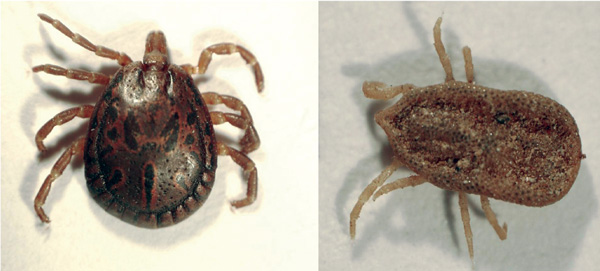Volume 20, Number 5—May 2014
Dispatch
Rickettsia spp. in Seabird Ticks from Western Indian Ocean Islands, 2011–2012
Figure 2

Figure 2. Amblyomma loculosum (left) and Carios capensis (right) ticks from seabird colonies on western Indian Ocean islands.
Page created: April 18, 2014
Page updated: April 18, 2014
Page reviewed: April 18, 2014
The conclusions, findings, and opinions expressed by authors contributing to this journal do not necessarily reflect the official position of the U.S. Department of Health and Human Services, the Public Health Service, the Centers for Disease Control and Prevention, or the authors' affiliated institutions. Use of trade names is for identification only and does not imply endorsement by any of the groups named above.